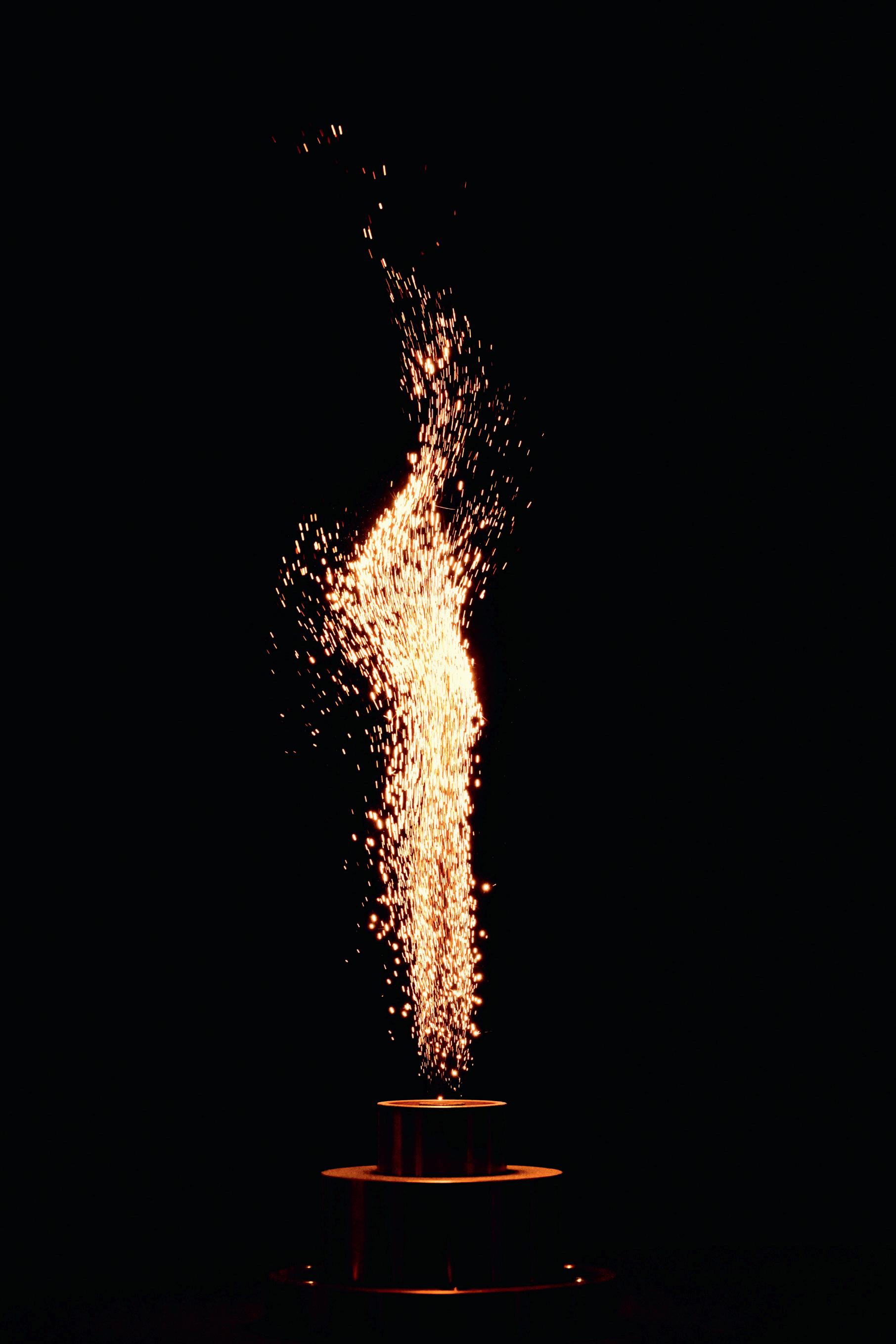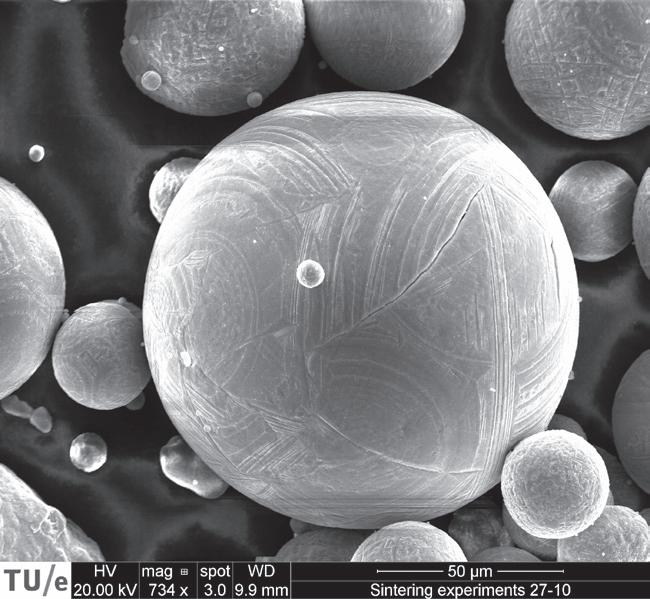

The power behind a sustainable future

A large proportion of global energy demand is still met through burning fossil fuels such as oil and natural gas. Researchers in the MetalFuel project are exploring the potential of iron powders as an alternative carrier of energy, part of the wider goal of moving towards a more sustainable society, as Professor Philip de Goey explains.
Around 80 percent of global energy demand is currently met through burning fossil fuels, and replacing them with more sustainable alternatives is a complex task. While solar and wind farms are part of the overall energy mix in many countries, they don’t provide the reliable, on-demand supply that the industrial sector requires. “Industry needs a huge amount of energy during Winter, but of course you can’t guarantee that the sun will shine in January. It’s also difficult to store wind and solar power, at least not for very long times and in big quantities,” acknowledges Philip de Goey, Professor of Mechanical Engineering at the Technical University of Eindhoven. What is required is a reliable energy carrier, and Professor de Goey believes metal powders hold great potential in this respect. “Metal powders are compact, safe and are relatively easy to store. They can then be used in Winter at those times and in those places where they are really needed,” he outlines.
MetalFuel project
This is a topic Professor de Goey is investigating as Principal Investigator of the ERC-funded MetalFuel project, with the primary goal of understanding how iron burns. This is crucial to ensuring that energy released through burning a metal powder is released in a controlled and safe way. “We aim to understand how this combustion process works,” says Professor de Goey. This starts from investigating how a single particle of iron powder burns. “What processes take place there? What temperatures are reached and how long does it take? We are conducting numerical and experimental studies on how single particles of different sizes burn,” continues Professor de Goey. “Then when a single burning particle approaches a cold particle at close enough range, it will heat up and ignite that particle. When you have a flame, you essentially have a front of particles which ignite each other. A front of particles is ignited, and then they ignite the next layer of non-ignited particles.”
The speed of this propagating front of particles is an important consideration in terms of the combustion of metal fuels and

harnessing the released energy. If it moves too slowly, then it’s very difficult to get the energy out, while if it moves too fast it’s very difficult to control the release of energy. “The typical velocity of such a front of particles in a gas flame is around one metre a second, while it’s much faster in a hydrogen flame, at 10 metres per second,” explains Professor de Goey. The particles in an iron flame move much slower, at somewhere between 1-10 centimetres a second depending on their size, which Professor de Goey says raises some important issues. “It is more difficult to get a stable flame from burning iron than with hydrocarbons or hydrogen,” he says. “The mixture of particles and air need more time to burn, but we also don’t want the iron to vaporise, so we need to carefully control the temperature.”
Researchers are using a variety of techniques in the project to investigate this and other issues, aiming to build a deeper understanding of metal combustion. As part of this work, Professor de Goey and his team have created a system to monitor the burning of a single iron particle. “We use a very thin needle to inject single particles into a hot co-flow and depending on the temperature of this co-flow they are ignited or not. Then we can see the particle burning,” he outlines. The time that it takes for an iron particle to burn is an important consideration, while researchers are using a variety of techniques to also look at other issues. “When we have isolated a single particle, we can use cameras and other techniques to study it and its surroundings. That’s very novel,” continues Professor de Goey. “We can look at different wavelengths of radiation, study the temperature of the particle, and many other things.”
This contributes to a deeper understanding of how a single particle burns, from which researchers can then look to investigate how particles ignite each other and create a flame.
The project team are conducting experiments using several different types of burners, with the aim of assessing the burning velocity of different flame fronts. “We essentially measure how fast a flame front burns,”
explains Professor de Goey. The MetalFuel project forms one part of a wider undertaking, in which researchers aim to develop a complete cycle, enabling the sustainable, ongoing reuse of metal fuels. “When you have burned the iron and then captured it in the form of iron oxide, we then want to reduce it back to iron, so that it can be burnt again and again,” says Professor de Goey. “A non-profit innovation centre called Metalot has been established to try to bring this idea to the market, and a consortium of parties is working on very largescale systems.”
Sustainability
A system capable of generating 1 megawatt of energy through burning iron has been developed for example, and the iron oxide can then be reused following a reduction reaction, which represents a more sustainable way of meeting demand than conventional alternatives. The emissions associated with this process are also extremely low, a point Professor de Goey is keen to highlight. “Nitrogen oxide (NOx) emissions – which is a major problem here in the Netherlands – are significantly lower with burning iron powder than in the case of natural gas flames,” he says. Different

to translate research advances into practical applications. One area of interest is the steel industry, and researchers are exploring new ways of operating, without completely dismantling existing infrastructure. “We are looking to use what is already there in future value chains. With a coal or a biomass plant, we’re interested in replacing the burners and using iron powder,” says Professor de Goey. While a lot of attention has focused on hydrogen and electrification as a way of reducing our dependence on fossil fuels, iron powders could play an important role in providing carbon-free energy in future,
“We are conducting numerical and experimental studies on how iron particles burn. What processes take place? What temperatures are reached and how long does it take?”
start-ups are now working towards a 20 megawatt system, and Professor de Goey and his team are supporting this research, which he sees as an important contribution to the wider push towards a more sustainable society. “We need to find alternatives to fossil fuels if we are to decarbonise our economy,” he stresses.
The project team is now exploring different funding options to support further investigation, with Professor de Goey looking

MetalFuel
Towards a full multi-scale understanding of zero-carbon metal fuel combustion
Project Objectives
The aim in the MetalFuel project is to develop an experimentally validated theoretical/numerical multi-scale framework for the propagation, stabilisation and structure of dense metal dust flames.
Metal fuels hold rich potential as dense energy carriers, and the project’s research will advance knowledge in this field.
Project Funding
This project is funded by the European Reesarch Council (ERC), Grant agreement ID: 884916.

Project Partners
• Group De Goey
• Group Van Oijen • EIRES
• Mechanical Engineering
Contact Details
Project Coordinator,
Prof. Dr. LPH de Goey
Full professor @ ME Dept Eindhoven University of Technology
De Zaale
Eindhoven
E: L.P.H.d.Goey@tue.nl
W: https://www.tue.nl/en/research/ research-groups/power-flow/towards-a-fullmulti-scale-understanding-of-zero-carbonmetal-fuel-combustion
W: https://research.tue.nl/en/persons/lphphilip-de-goey
believes Professor de Goey. “Iron powder is very interesting, particularly for hightemperature processes in the industry, as it easier to store and transport in a compact and safe way than hydrogen for instance,” he stresses.


Philip de Goey is Professor of Combustion technology at the Technical University of Eindhoven. His areas of expertise include combustion, innovation and technology, and energy. He is highly active in conducting numerical and experimental research in laminar flames and related fields.


SEM image of a number of burnt iron-oxide particles.
Iron-air flame stabilised on a jet-in-hot-coflow burner.
Prof. Dr. Philip de Goey
